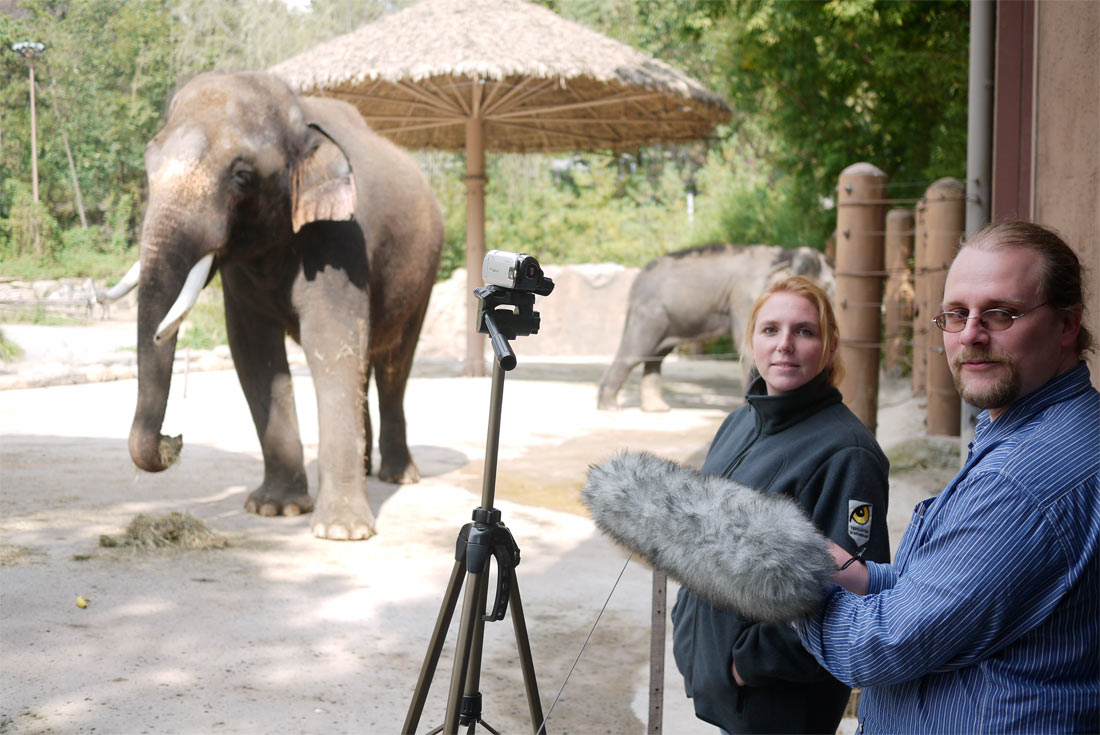Elephant Speaks Korean Out Loud

A zoo elephant in South Korea, can speak Korean out loud, researchers say. The pachyderm is capable of saying "hello," "good," "no," "sit down" and "lie down" — all by using its trunk to do the work of lips in a process scientists don’t fully understand.
The elephant likely does not understand the actual meaning of what he says, researchers said.
Past reports have suggested both African and Asian elephants were capable of vocal mimicry like parrots. African elephants have been known to imitate the sound of truck engines, and a male Asian elephant living in a Kazakhstan zoo was said to utter sounds resembling Russian and Kazakh, but that case was never investigated scientifically.
Scientists investigating an Asian elephant known as Koshik say the beast can imitate human speech, pronouncing words in Korean, and those who know the language can readily understand Koshik. He accomplished this in a very unusual way — using his trunk stuck inside his mouth. [Watch Koshik Speak Korean
A special elephant
"We do not really know what Koshik is doing exactly," said researcher Angela Stoeger-Horwath, a bioacoustician at the University of Vienna.
Three other Asian elephants have been known to whistle by pressing their trunks against their mouths, but this is the first time any elephant was known to alter their sounds by sticking its trunk into its mouth.
Get the world’s most fascinating discoveries delivered straight to your inbox.
"Where there's a will, there's a way. Koshik's drive to share vocalizations with his human companions was so strong that he invented a whole new way of making sounds to achieve it," Stoeger-Horwath told LiveScience.
Although elephants living under human care may be heavily exposed to speech from birth on, "we all know that they do not imitate speech on a regular basis. So what is special about Koshik?" Stoeger-Horwath said. [Elephant Images: World's Largest Land Mammals]
Koshik was the only elephant at the Everland Zoo in South Korea for about seven years from 1995 to 2002, when he was a juvenile from age 5 to 12. His trainers first noticed him imitating human speech in 2004.
"The decisive factor for speech imitation in Koshik may be that humans were the only social contact available during an important period of bonding and development," Stoeger-Horwath said.
"We suggest that Koshik started to adapt his vocalizations to his human companions to strengthen social affiliation, something that is also seen in other vocal-learning species — and in very special cases, also across species," Stoeger-Horwath said.
Elephant vocabulary
The researchers asked 16 native Korean speakers to write down what they heard when listening to playbacks of Koshik's sounds. The elephant's vocabulary apparently consists of five words — "annyong" ("hello"), "choah" ("good"), "aniya" ("no"), "anja" ("sit down") and "nuo" ("lie down") — although his ability to imitate their consonants often proved weak.
When scientists analyzed Koshik's sounds, they were clearly different from the usual calls of elephants and exactly copied the pitch, timbre and other details of human voices.
"This is remarkable considering the huge size, the long vocal tract, and other anatomical differences between an elephant and a human," Stoeger-Horwath said.
As far as the scientists can tell, Koshik does not actually understand exactly what he says.
"Koshik mainly seems to be using these vocalizations as a way of bonding with people, rather than for their meaning," Stoeger-Horwath said.
Still, researchers said Koshik's imitation skills may yield insights on the biology and evolution of complex vocal learning. This ability is key to human speech and music.
Further studies might also explore how elephants vocally communicate with each other.
"Elephants are highly social mammals living in groups of related and socially affiliated individuals," Stoeger-Horwath said. "Elephants use low-frequency vocalizations to keep contact even over great distances when they split up for a certain period of time. It is therefore important for elephants to identify members of their family based on vocalizations. One possibility that we suggest is that socially affiliated elephants might imitate each other to increase similarity of their vocalizations to facilitate vocal recognition."
The scientists detailed their findings online Nov. 1 in the journal Current Biology.
Follow LiveScience on Twitter @livescience. We're also on Facebook & Google+.



